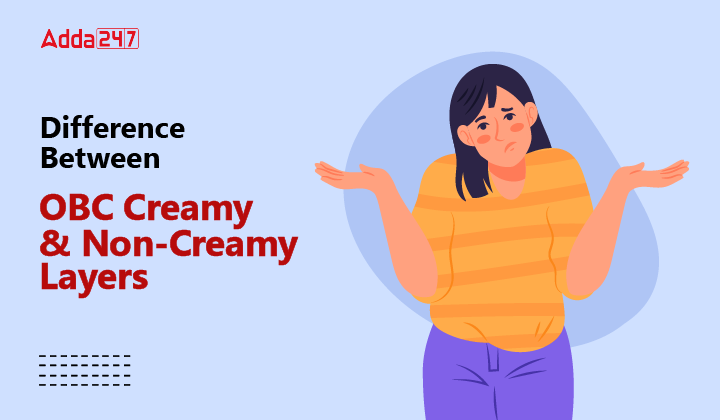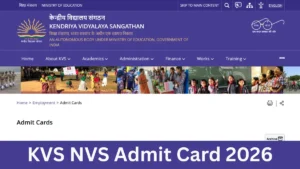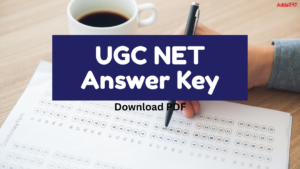Table of Contents
The Creamy and Non-Creamy Layers of OBC in India play an integral role in shaping society. In India, OBC (Other Backward Classes) refers to a category of socially and educationally disadvantaged communities. The OBC category is intended to provide affirmative action and opportunities for the advancement and welfare of these communities. The OBC category is not uniform across the entire country but varies from state to state. OBC Category mainly has been divided in 2 parts i.e. Creamy Layer and Non Creamy Layer. Here in below article, we will throw light on India’s Other Backward Castes(OBC), their characteristics, and the difference between the layers.
What is OBC in India?
OBC (Other Backward Classes) in India refers to a category of socially and educationally disadvantaged communities. The central government and state governments periodically review and update these lists based on various factors such as social and economic indicators, representation in government services, educational attainment, and other relevant criteria. Here are some key points about OBC in India:
- OBC refers to a category of socially and educationally disadvantaged communities in India.
- OBC status is based on historical disadvantages and the need for affirmative action.
- Each state in India maintains its own list of OBC communities, specific to that region.
- OBC category provides reservation benefits in education, government jobs, and legislative bodies.
- OBC status is periodically reviewed and updated by the central and state governments.
- OBC communities are eligible for various welfare schemes and scholarships.
- OBC reservation aims to promote social equality and upliftment of backward communities.
- The criteria for OBC classification include social backwardness, educational backwardness, and representation in government services.
- OBC status may differ from one state to another, and benefits can vary accordingly.
History of OBC
The Mandal Commission known as Second Backward Class Commission, led by Bindeshwari Prasad Mandal, was established in 1979 with the goal of identifying the “socially or educationally backward classes of India” while keeping in mind the social injustices experienced by the lower castes. The Mandal Commission’s report in 1980 was indeed the first official recognition and adoption of the term “Other Backward Classes” (OBC) in India. This report suggested giving OBC (Other Backward Classes) 27% reservation, which would result in 49% of positions for them in public universities and government services.
OBC Categories
In the context of OBC (Other Backward Classes) reservation in India, there is a distinction made between creamy layer and non-creamy layer within the OBC category. The creamy layer refers to individuals within the OBC community who are relatively more economically and socially advanced and are considered to have overcome the backwardness that the reservation policy aims to address. On the other hand, the non-creamy layer comprises individuals who are economically and socially less advanced and are eligible for the benefits of OBC reservations.
What is an OBC Creamy Layer?
The Other Backward Classes (OBCs) members who are comparatively educated and forward-thinking but ineligible for government-sponsored educational and professional benefit programmes are referred to as the “creamy layer” in Indian politics. The Sattanathan Commission, which ordered that the “creamy layer” should be excluded from the reservations (quotas) of civil posts, coined the phrase in 1971.
What is an OBC Non-Creamy Layer?
Backward castes and tribes that either lack education or possess qualifications that fall short of a high school diploma are referred to as non-creamy layers of OBC. All other castes and tribes that do not meet the requirements are considered non-creamy OBC, according to a government announcement. In other words, it does not include the creamy layer of OBC since they lack the necessary educational eligibility.
Differences between the Creamy & Non-Creamy Layers
Here we are going to learn difference between OBC Creamy and Non Creamy Layers
| OBC Creamy | OBC Non-Creamy |
| Represents the upper caste and acquires education | Lack formal education |
| Consistent across all Indian states | Varies from one state to another, depending on the number and types of seats |
| Income threshold is greater than 8 lakhs | Much lesser than 8 lakhs |
| No formal schooling required | Has academic levels that are comparable to a high school diploma and above |
| Eligible for admission to IITs and IIMs | Not eligible |
| Qualified for employment in Indian Civil services | Qualified for employment in Indian Forest and Railway services |
OBC reservation in the Central Government
OBC reservation in the Central Government is 27%. The Mandal Commission’s recommendation in 1992 led to the implementation of a 27% reservation for Other Backward Classes (OBCs) in government jobs and higher educational institutions. This significant step towards inclusivity was further reinforced by the 93rd amendment to the Indian Constitution, which introduced two new clauses under articles 15 and 16.
National Commission for Other Backward Classes (NCBC)
The National Commission for Other Backward Classes (NCBC) is a constitutional body in India that works towards safeguarding the rights and interests of Other Backward Classes (OBCs). It was established with the objective of addressing the issues faced by socially and educationally disadvantaged communities and ensuring their inclusive development.
The NCBC operates under the provisions of the National Commission for Other Backward Classes Act, 1993. The commission consists of a chairperson, vice-chairperson, and three members who are appointed by the President of India. The members are tasked with assessing the backwardness of various communities and recommending their inclusion or exclusion from the OBC category. The responsibilities of the NCBC has been given below :
- to conduct surveys and research to identify OBC communities that require affirmative action for their upliftment.
- To investigates complaints and grievances related to the implementation of reservation policies for OBCs in public employment and educational institutions.
- serves as a platform for OBC communities to voice their concerns and issues.
- Promotes the rights and well-being of OBC communities in India. By assessing backwardness, investigating grievances, and making recommendations for affirmative action.



 HPRCA TGT Admit Card 2026 OUT at hprca.h...
HPRCA TGT Admit Card 2026 OUT at hprca.h...
 KVS NVS Admit Card 2026 for Teaching and...
KVS NVS Admit Card 2026 for Teaching and...
 UGC NET Answer Key 2026 Out (Memory Base...
UGC NET Answer Key 2026 Out (Memory Base...












